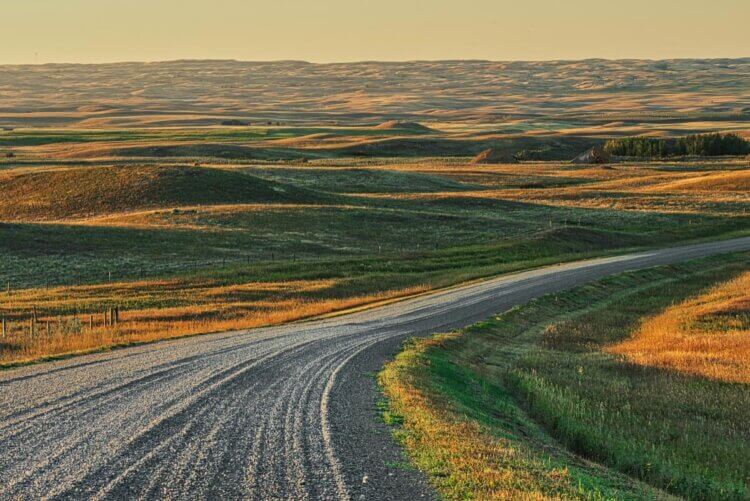
All photos © Robin and Arlene Karpan
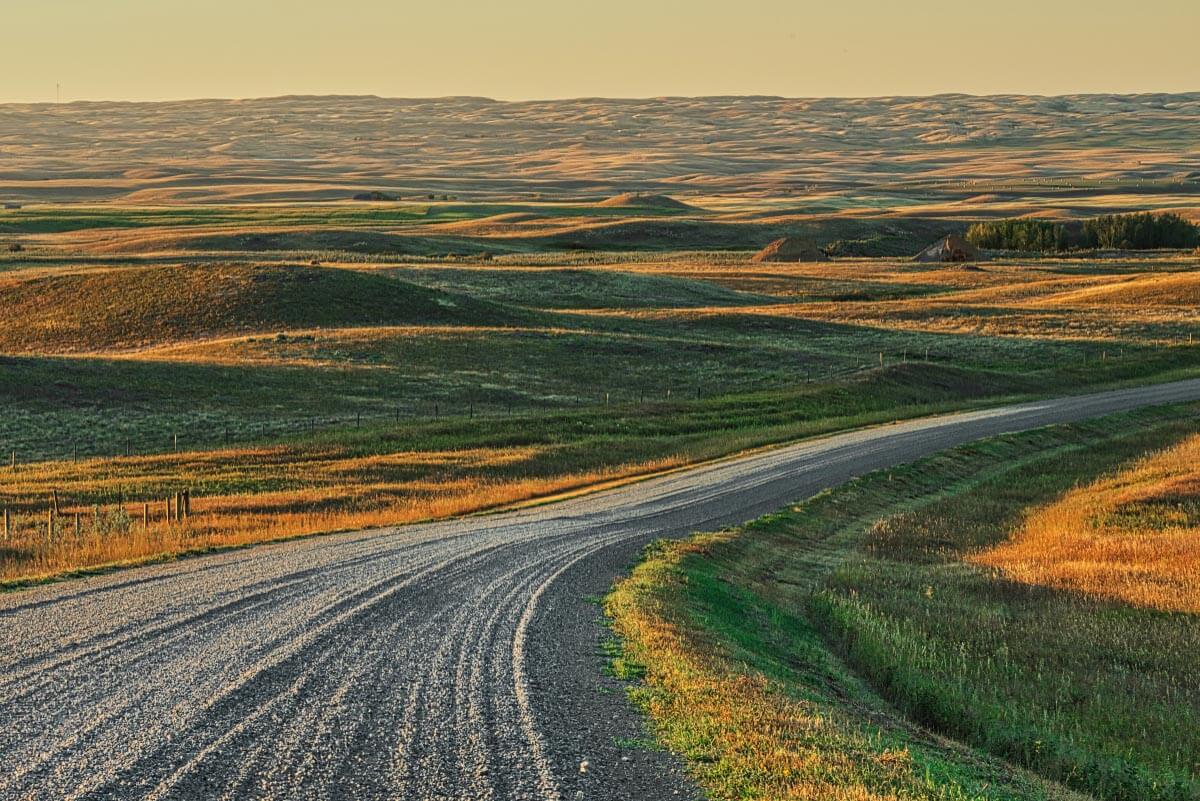
Saskatchewan abounds in fabulous routes for road trips. But when you’re in the mood for something that is a bit more off-the-beaten-path, where you can meander along in peace well away from the maddening crowd, even during a summer long weekend, these three drives in southern Saskatchewan fit the bill perfectly.
The Road to Avonlea in the Cactus and Dirt Hills
These fascinating hills are only a short drive south of Regina or Moose Jaw, but are a world away. They are considered the largest and most well-defined glaciotectonic hills in the world. Also known as ice-shoved hills, they were formed by ice into folds, ridges, and push moraines during the last ice age.

We have mapped a couple of routes starting at the small community of Spring Valley, where a visit to the interpretive centre helps set the scene. Much of the area consists of rolling hills with a lot of natural grasslands and an incredible number of ponds and wetlands.

According to scientists, spring-fed Oro Lake is unique. It has the highest magnesium level of any salt lake in the Great Plains. While it is not uncommon for small prairie lakes to completely dry up in times of drought, Oro Lake has never run dry. The lake has a community campground in case you would like to stay awhile.
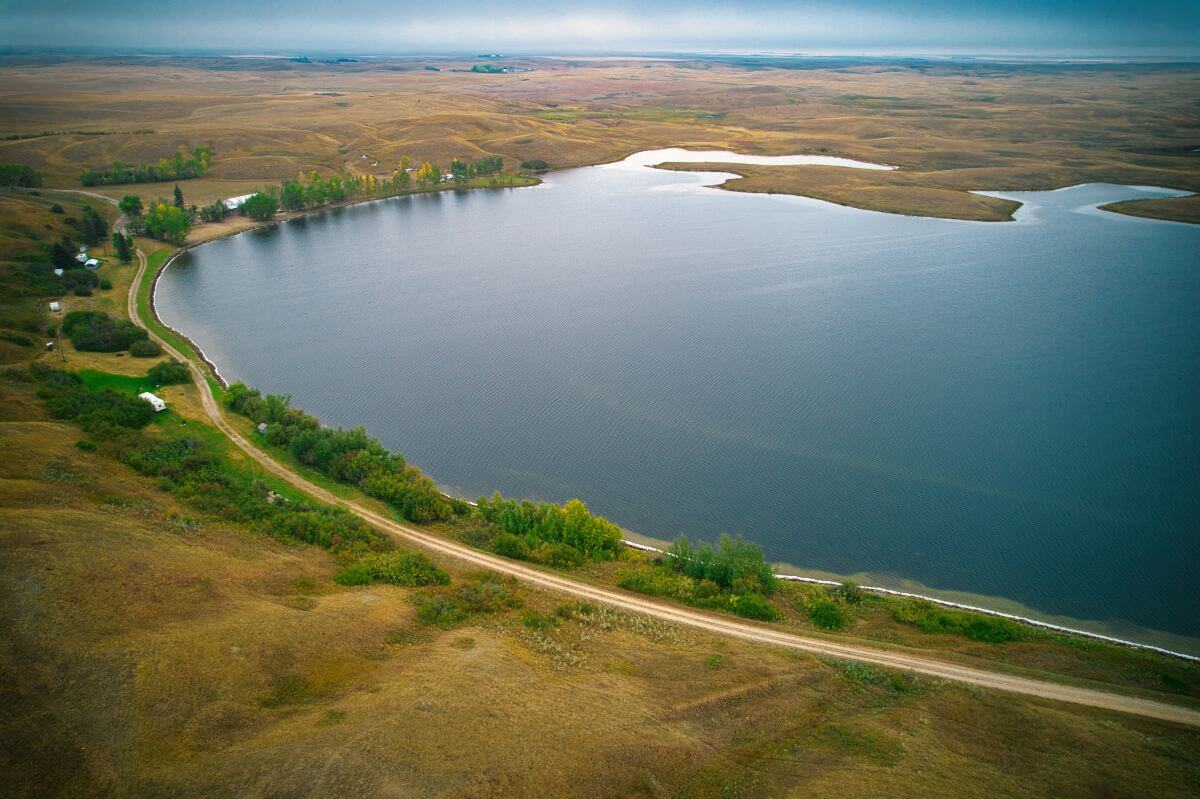
There is a wonderful backroads route from Spring Valley to Avonlea. This entire area is great for finding a lot of birds, but we have never seen so many hawks at once as along this road. Avonlea is famous for its Long Creek Golf and Country Club, as well as nearby Dunnet Regional Park. But we consider the top spot to be the spectacular Avonlea Badlands, an enchanting land of weathered buttes, stone-capped hoodoos, strange pillar formations, and dripping hillsides. The badlands are on private land, with tours offered by the Avonlea Heritage Museum.
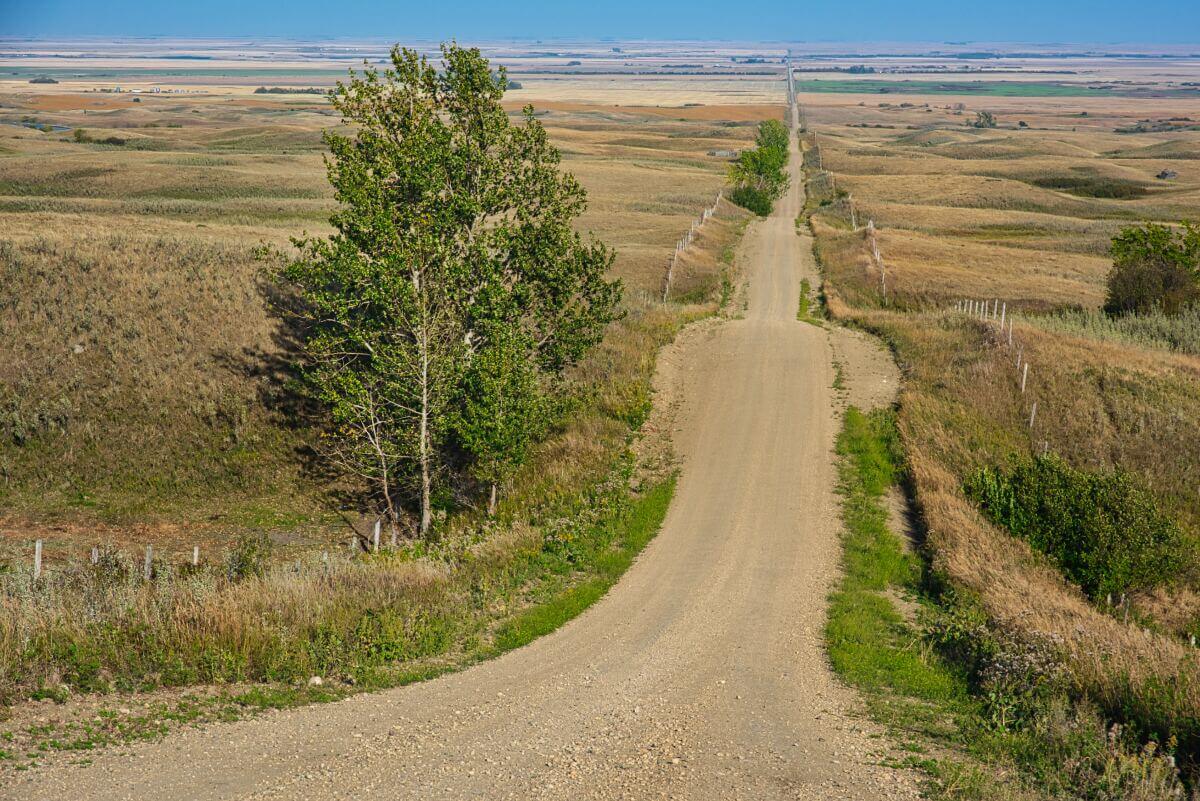
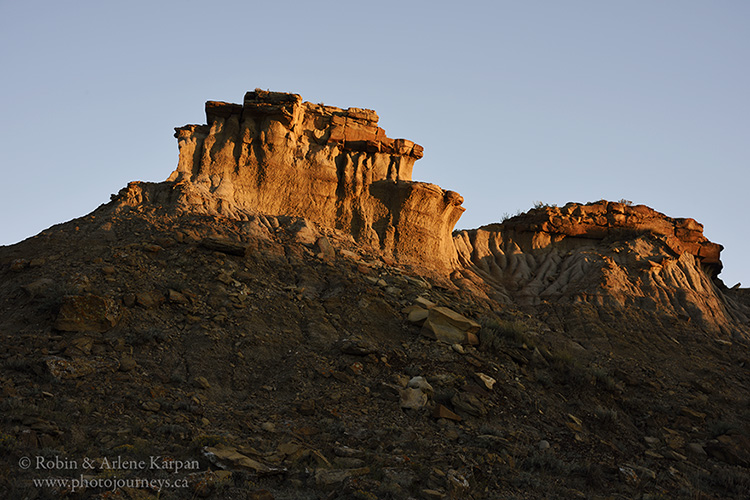
Another nearby attraction is the Claybank Brick Plant National Historic Site. Bricks produced here were among the most highly prized in the country and were used in prominent buildings such as the Chateau Frontenac in Quebec City. Heat-resistant firebricks manufactured at this plant were used on the rocket launch pad in Cape Canaveral, Florida. During opening hours at the historic site, you can also arrange to visit the fascinating and colourful Massold Clay Canyons where raw material came from to make the bricks.
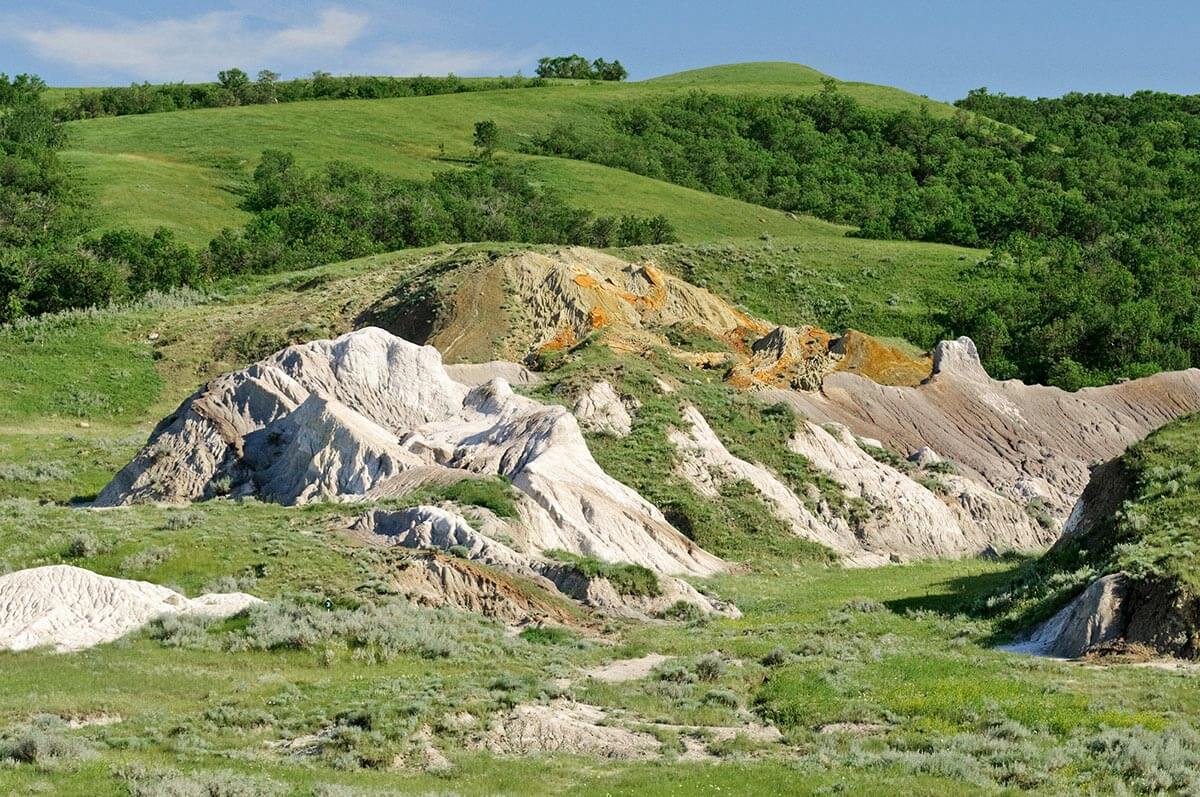
Centre Road – Moose Mountain Provincial Park
Moose Mountain Provincial Park in southeast Saskatchewan ranks among the most popular parks in the province. Rising 150 metres above the surrounding plains, the extensive hills dominated by aspen and white birch forest cover over 400 square kilometres and support a range of wildlife.

Centre Road runs through most of the east-west length of the park, but the contrast between the short section in the park’s core area and the backcountry to the west is quite dramatic. The popular core features the beach, golf course, well-manicured lawns and gardens surrounding the impressive stone Visitor Centre, and expansive campgrounds and cottage developments. For the most part, it’s all very civilized.
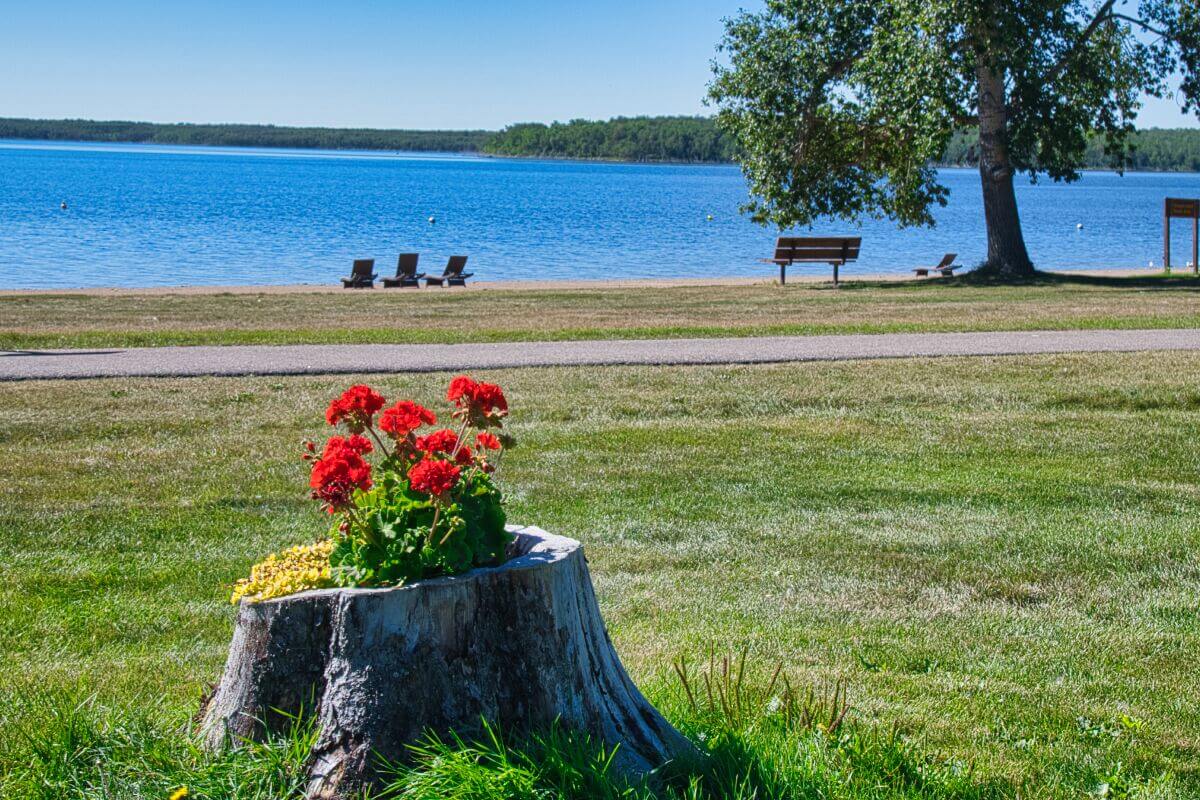
As we leave the main core area, things start to change quickly. The paved road turns to gravel then eventually to a single lane track. If conditions are favourable, but that’s a big “if”, it may be possible to travel the entire length of the park then link up with the grid road system to Kipling to the north or Kisbey to the south. Signs indicate that the road is not maintained. The road should not be attempted in wet weather and even in dry conditions there could be deep ruts which might be difficult for vehicles with low clearance. Cell phone coverage is spotty, and traffic is so light that you may have to wait a long time if you run into trouble. The last time we drove this route, we only passed a couple of other vehicles.
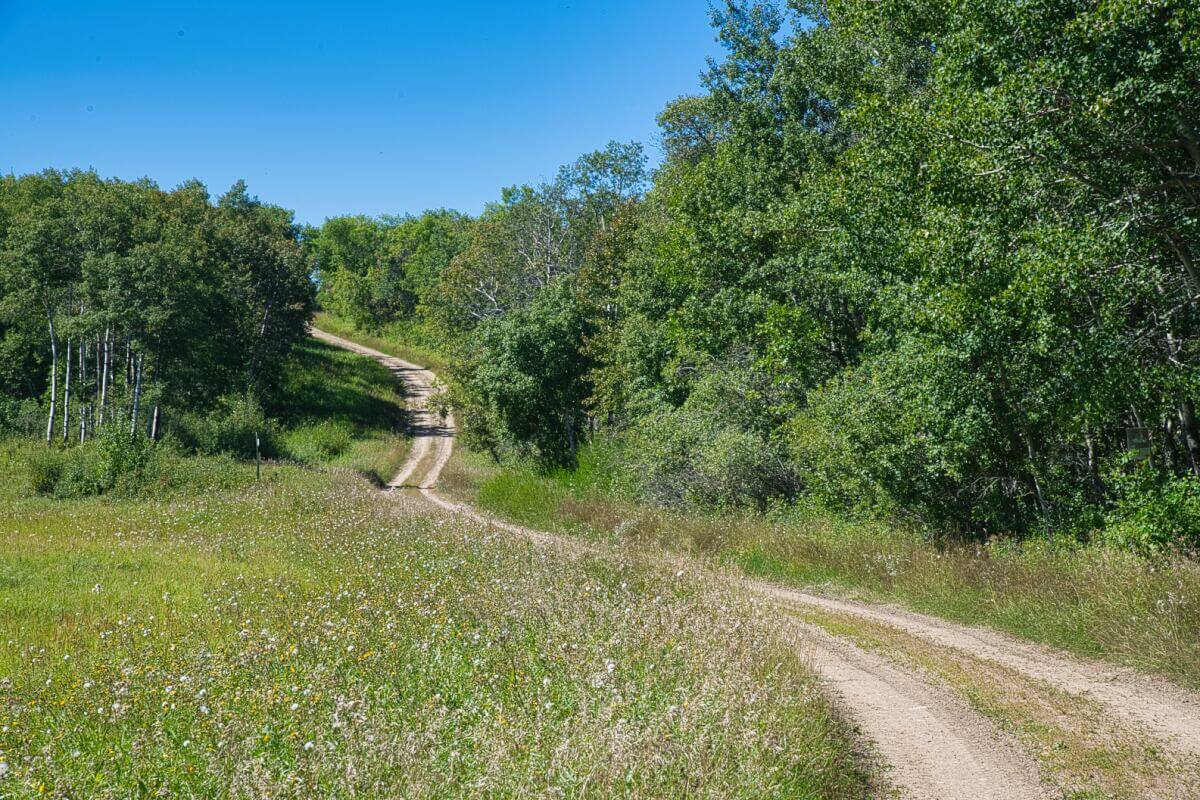
But if you like an adventurous drive and take the necessary precautions, this road goes through terrain unique in southern Saskatchewan. It winds past tall stands of aspens, and a seemingly endless series of wetlands, ponds, and marshy areas. The thick forest appeared almost impenetrable. At several low-level crossings, we had to carefully assess whether or not it was safe to cross.
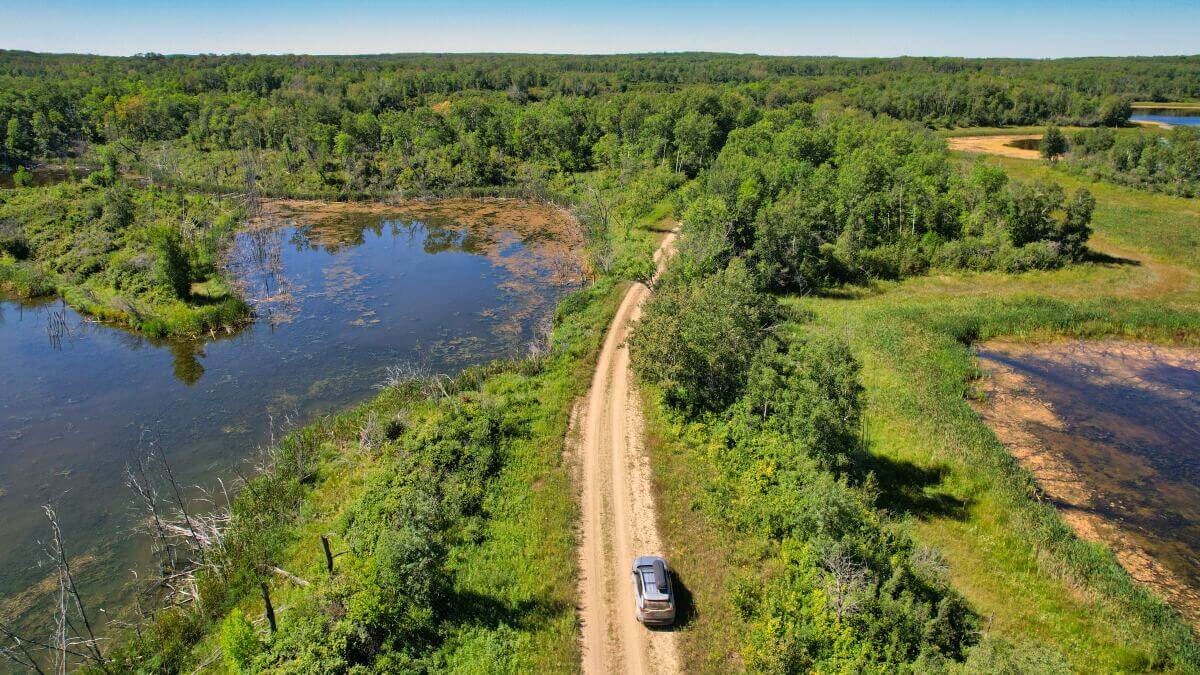
About 10 kilometres along, a sign indicates Gilles Lake to the north. It is usually possible to travel this road and continue north outside the park, then return to the main park area along another route.
Continuing west, Centre Road becomes increasingly rough. The last two times we took this drive, we got almost to the park boundary, but not quite. Each time we were stopped by a nasty mud hole that didn’t look passable. Even is if it isn’t possible to drive all the way, we still consider Centre Road worthwhile exploring as far as you feel comfortable.
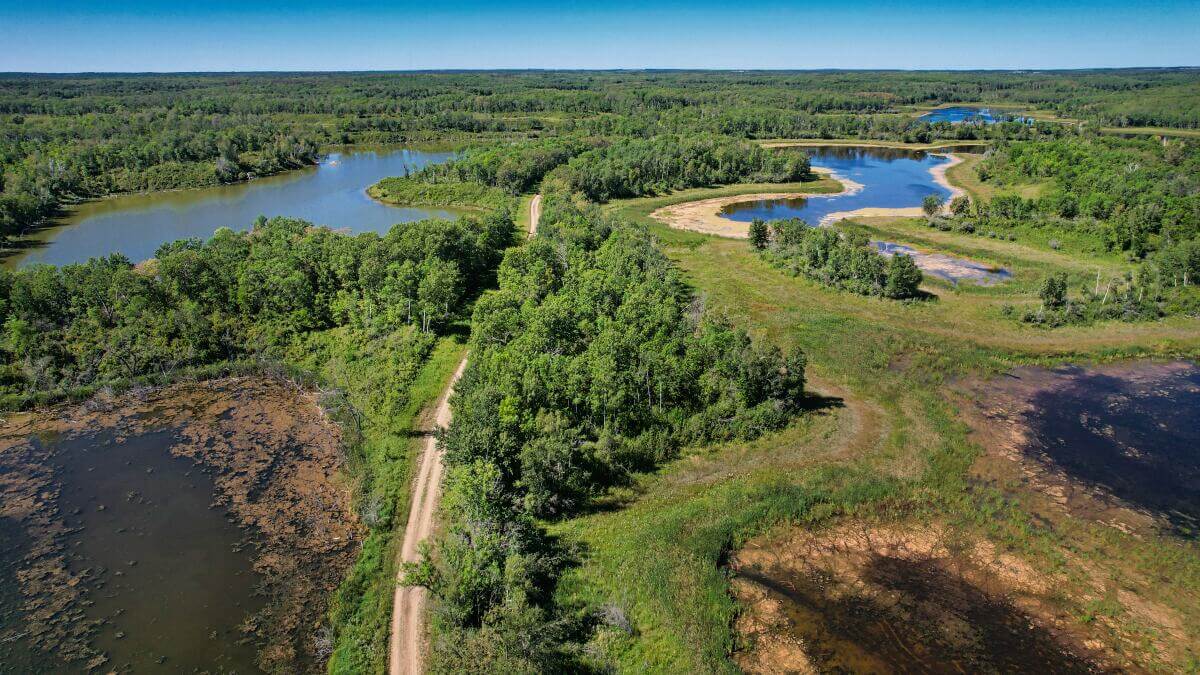
Willow Bunch to the Big Muddy Badlands
The Big Muddy Badlands stand out as a special landscape of south-central Saskatchewan. The most famous and easily accessible part of the badlands is Castle Butte, a massive freestanding butte. The “normal” way to get there is from Highway 34 south of Bengough, which is well-signed. But we have mapped out an interesting “backdoor route” starting at Willow Bunch and following an extremely little-travelled route across pastureland with other views over the Big Muddy Valley along the way.
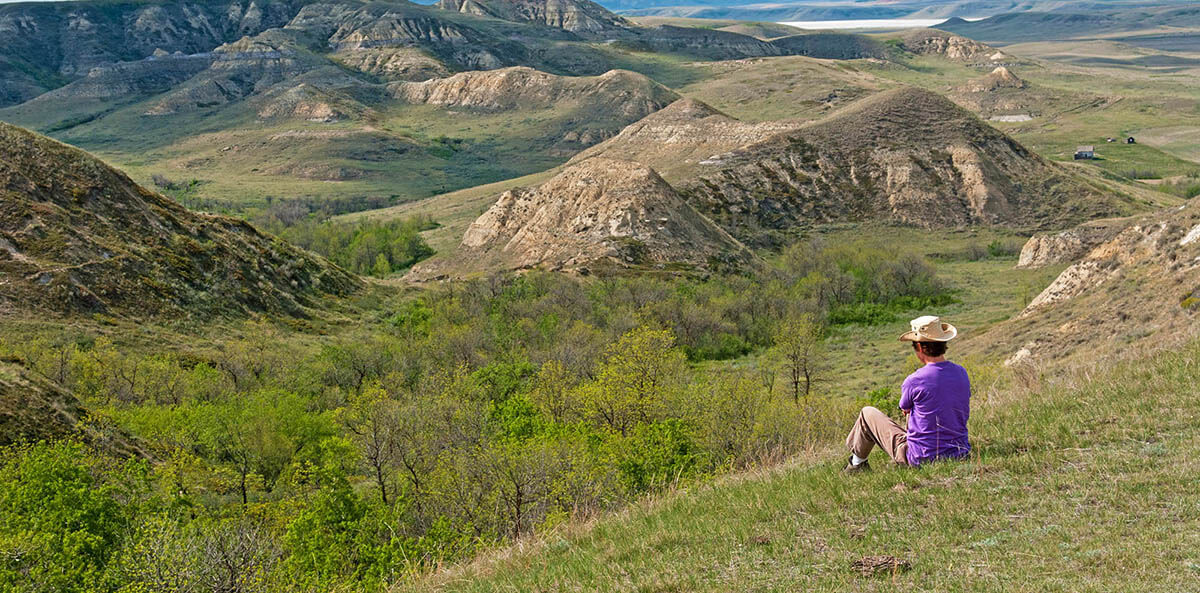
The town of Willow Bunch has a few attractions worth a look. Head to the Willow Bunch Museum to learn about the community’s most celebrated resident, Edouard Beaupré, better known as the Willow Bunch Giant. Born here in 1881, Edouard grew to an astounding 8 feet, 3 inches and weighed close to 400 pounds. The museum has extensive displays on the giant’s fascinating and tragic story, along with other aspects of life in this town with it strong French influence.
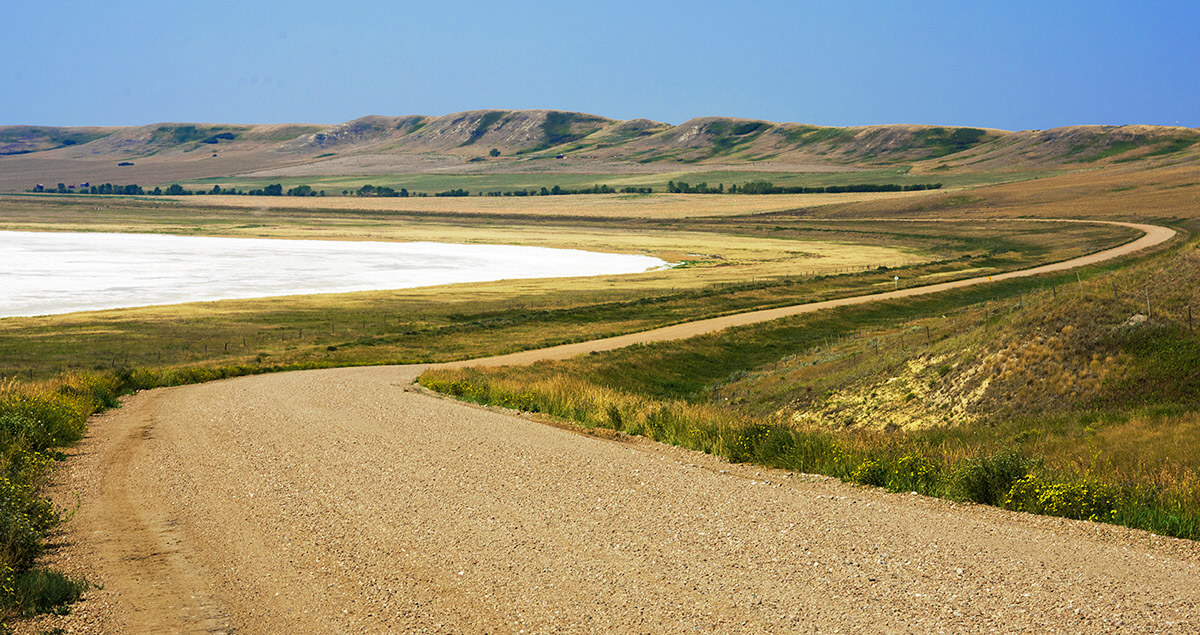
The route to Castle Butte starts along Grid Road 705, then at the former community of Harptree we turn onto a minor road that is still in reasonable good condition since it provides access to farms and ranches along the way. It really feels like the back of beyond as we travel across wide open stretches of hilly pastureland where it seems like we can see forever. A short detour brings us to more views over the Big Muddy Valley.
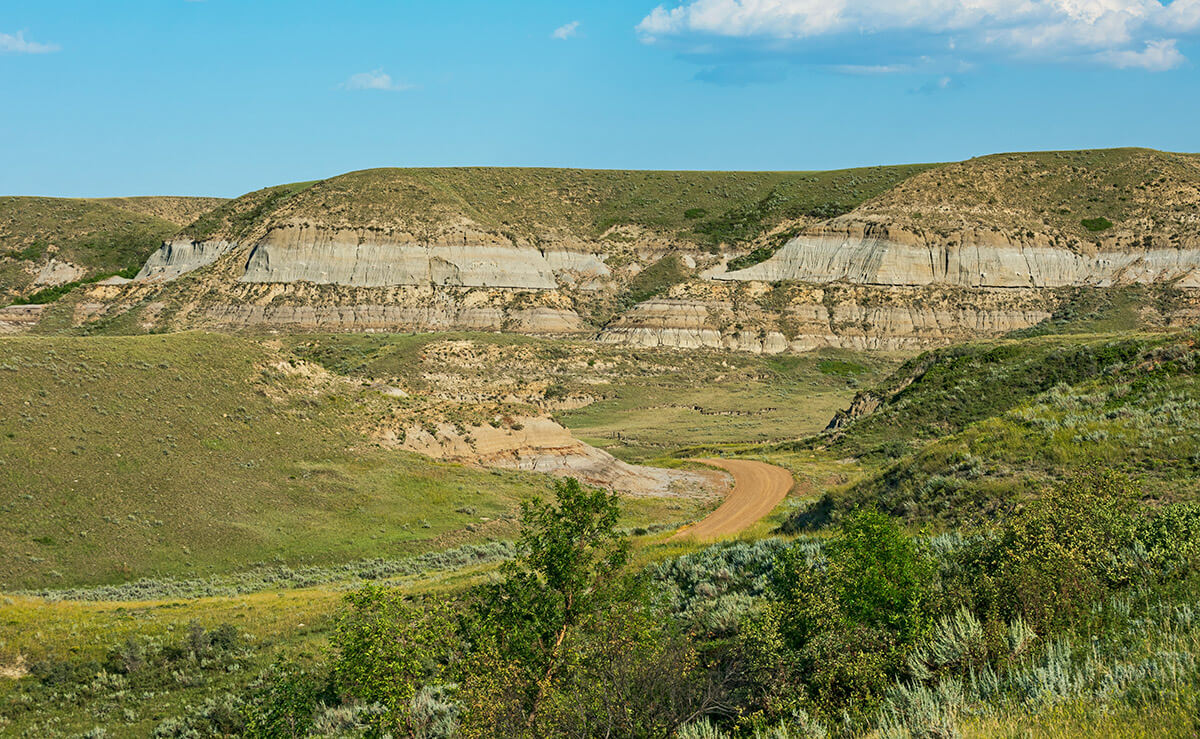
Eventually we reach the rim of the Big Muddy Valley and descend towards Castle Butte looming in the distance. It’s a great place to explore the age-old formations as you walk the quarter mile or so around the base of the butte. If you arrive late in day, stay around until sunset when the low sun gives the monolith a brilliant reddish tinge. Better yet, come back for sunrise when the butte takes on an almost unreal reddish glow. We liked sunrise here so much that we used an image of it for the cover of our bestselling book The Great Saskatchewan Bucket List – 50 Unforgettable Natural Wonders to See Before You Kick the Bucket.
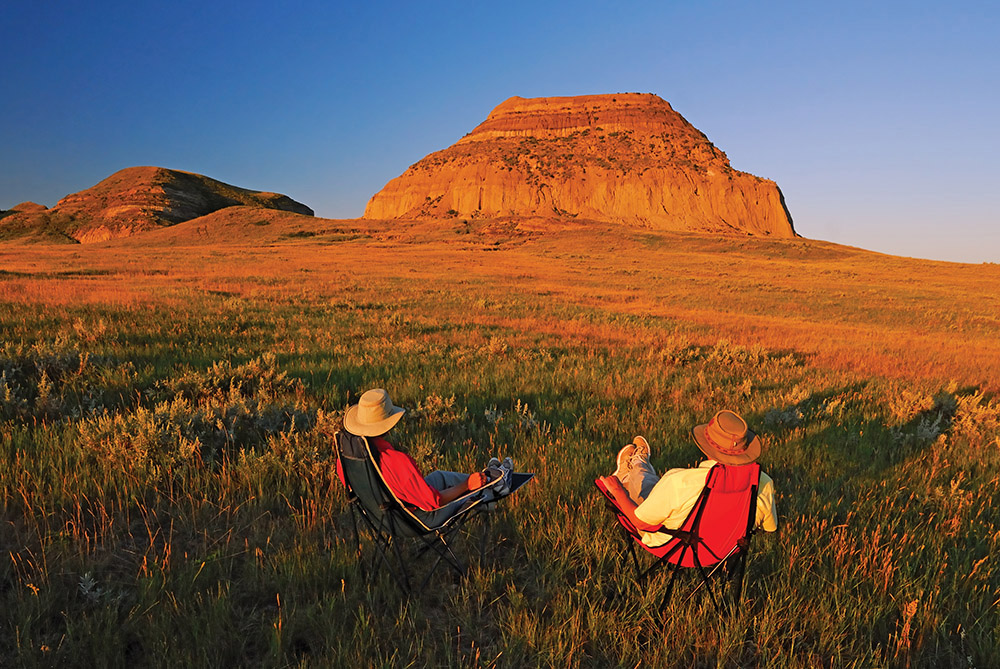
Get the Full Story
All of these routes and many more are outlined in more detail, complete with precise directions and GPS coordinates, in our recently-released Saskatchewan’s Best Scenic Drives – Revised Edition. The book is available in bookstores and select gift shops throughout Saskatchewan, as well as directly from Parkland Publishing.
SUBSCRIBE to Photojourneys below
Feel free to PIN this article
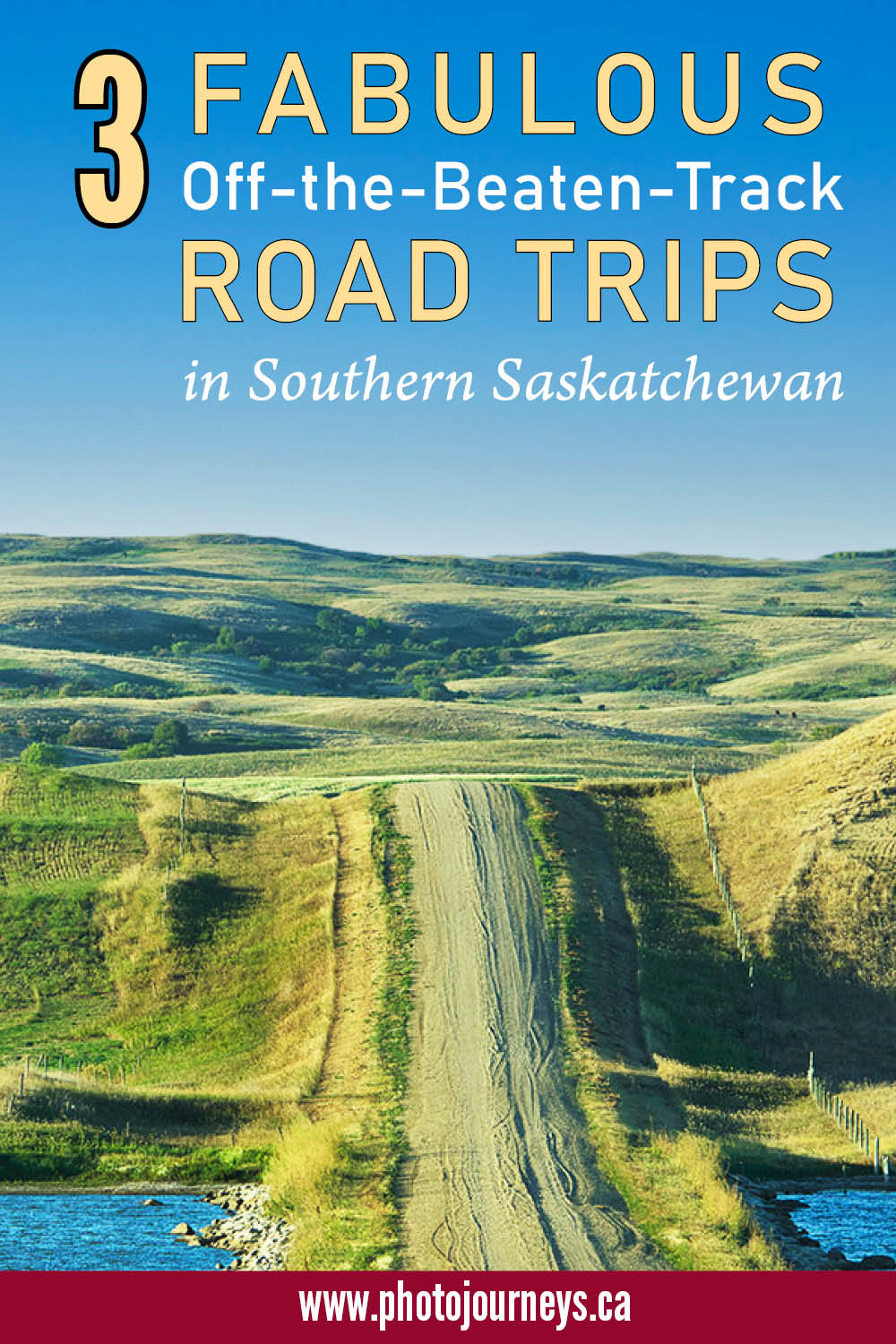


Wow! Just discovered your website as I was working on my Southwestern Saskatchewan road trip on the road less travelled. I’ve only just started to explore your website but clearly you have explored many of Canada’s off the beaten paths. I am eager to learn from your past travels and enjoy your great photography.
Thanks for your encouraging words Chris. We’re happy that you are enjoying the site. Hope you find some material here that you can use.